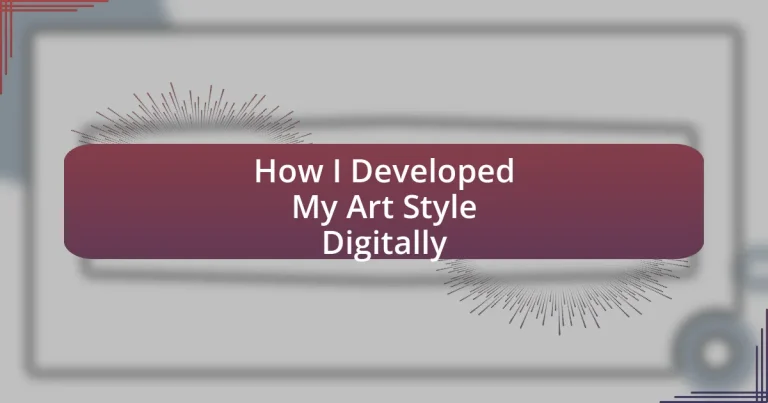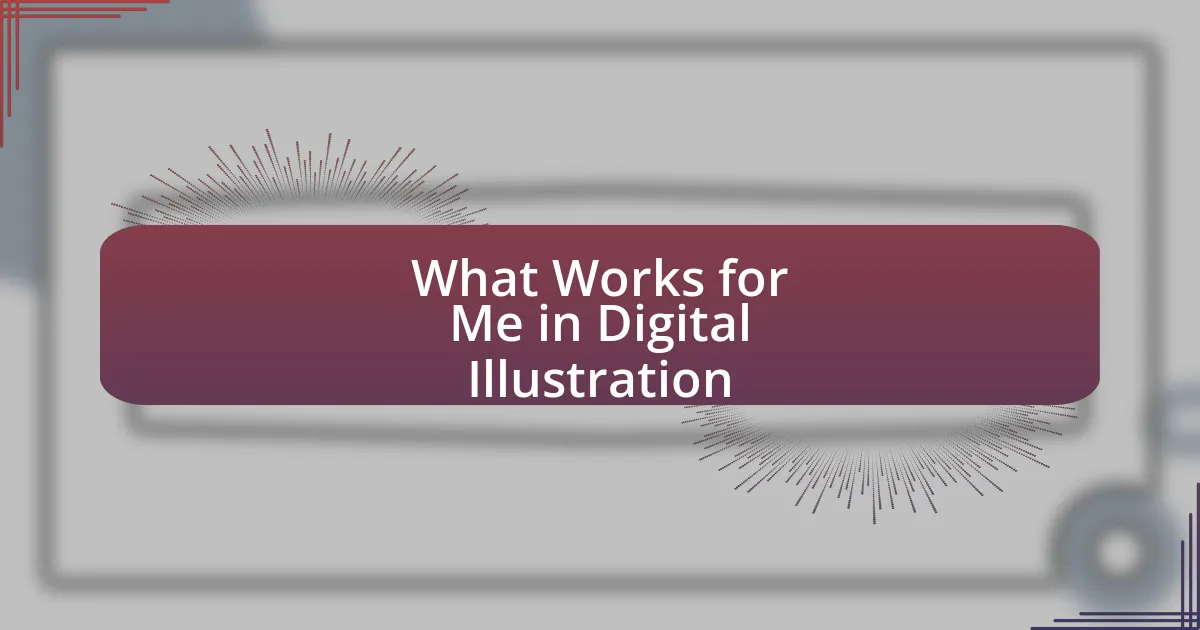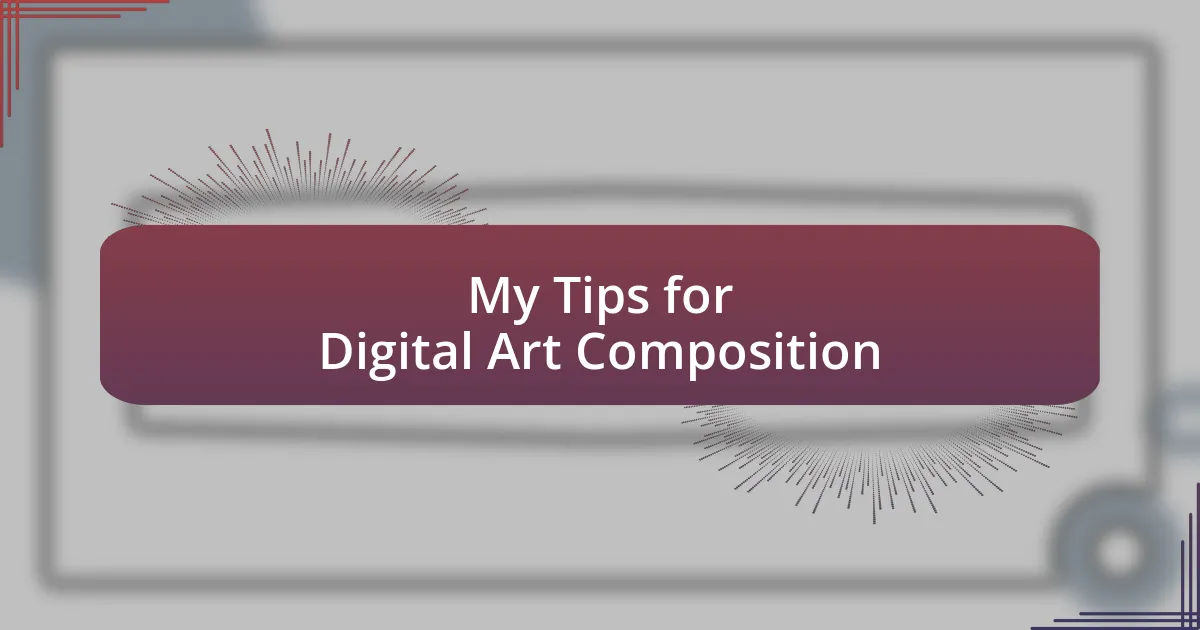Key takeaways:
- Understanding digital art involves mastering various tools, techniques, and embracing experimentation to develop a unique style.
- Choosing the right software significantly influences creativity, with community and resources enhancing the learning experience.
- Color palettes play a critical role in evoking emotions and personal connections within artwork, often inspired by nature and experiences.
- Creating consistent character designs requires attention to visual details and backstory, facilitated by maintaining a character sheet for reference.
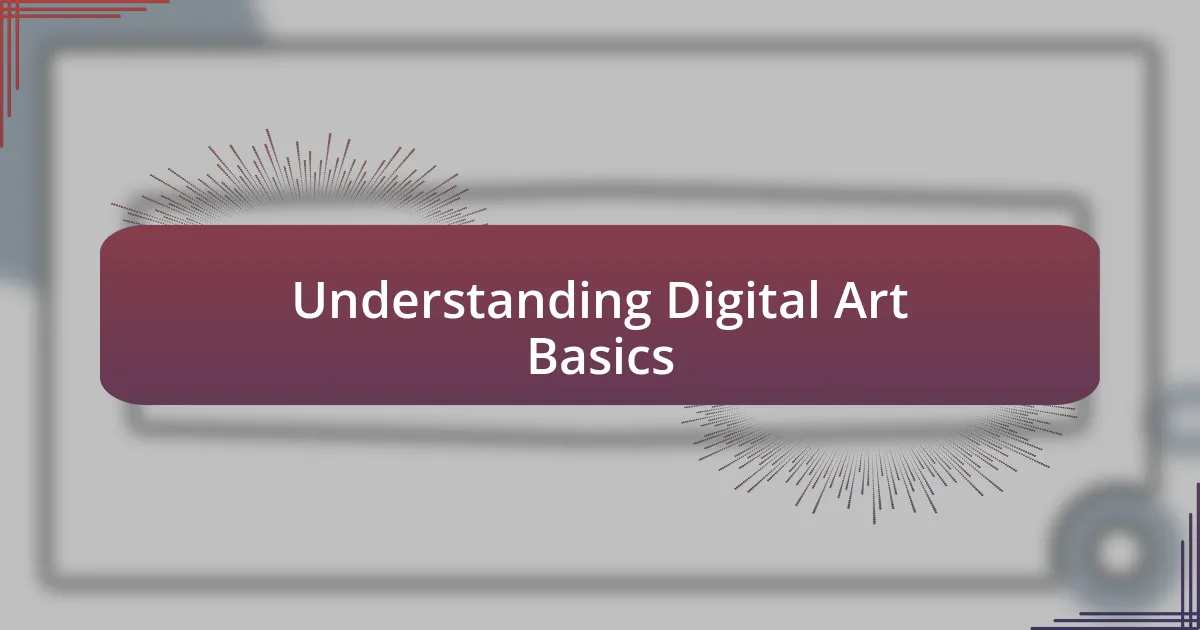
Understanding Digital Art Basics
When I first dipped my toes into digital art, I was overwhelmed by the various tools and software available. Choosing the right program felt daunting; I remember spending hours watching tutorials, but each click revealed a new layer of possibilities. Isn’t it fascinating how a simple brush tool can mimic the texture of traditional paint while offering endless customization?
Understanding the basics of digital art goes beyond just the software. For me, it was an awakening to the vibrant world of colors and layers. I recall the joy of discovering layers—they felt like magic to me. Each layer allowed me to experiment without the fear of permanent mistakes, offering a playground for creativity. Have you ever felt that exhilarating freedom when creating?
Another critical element is familiarity with the digital medium. Unlike traditional art, digital artwork demands a level of comfort with both the tools and the creative process. I often found myself frustrated when a piece didn’t turn out as envisioned. But with each failed attempt, I learned and grew. Isn’t that part of the artistic journey we all share? Embracing imperfection in digital art is just as important as mastering the technique.

Choosing the Right Software
Choosing the right software was one of the pivotal moments in shaping my digital art style. I often found myself torn between popular programs like Adobe Photoshop and Procreate. Each has distinct advantages: Photoshop excels in photo editing and complex compositions, while Procreate’s intuitive interface makes it perfect for sketching on the go. As I experimented with both, I discovered how the right tool could elevate my creativity and streamline my process.
My experience with software selection often felt akin to finding the perfect brush for a canvas. I remember the first time I used a specific brush in Clip Studio Paint that combined various textures. It was incredible to see how that single choice enhanced my artwork’s depth and character. To me, investing time to understand software capabilities and experimenting is crucial—a bit like trying out different colors until you find that perfect shade.
I also learned that it’s not just about the software itself, but also the community and resources available. I joined forums and watched countless tutorials, which enriched my experience. For example, the moment I first applied a tutorial’s technique to my artwork, I could see a significant improvement. Sometimes, guidance from fellow artists can illuminate paths I would have never considered alone.
| Software | Key Features |
|---|---|
| Adobe Photoshop | Extensive editing tools, layering, and versatile brushes |
| Procreate | User-friendly, excellent for sketching, and customizable brushes |
| Clip Studio Paint | Ideal for manga and comic art, offers vector capabilities and rich textures |
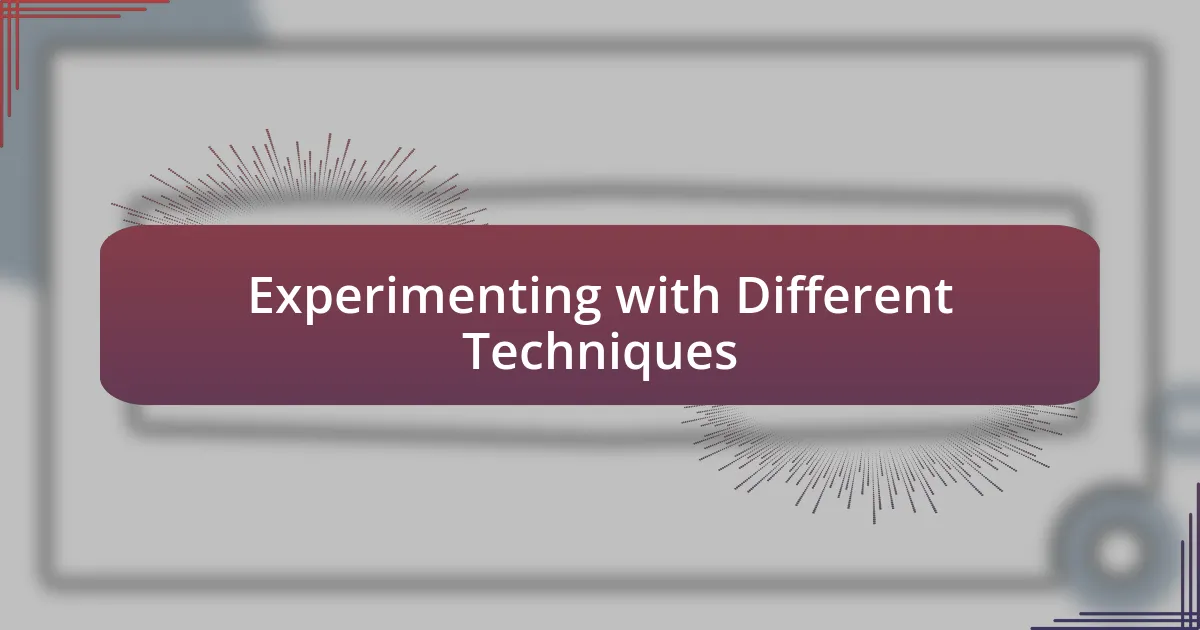
Experimenting with Different Techniques
Experimenting with different techniques played a crucial role in developing my digital art style. I remember diving into various brush types and settings, often leading to surprising discoveries. One night, while trying a splatter brush in Procreate, I created a background that seemed to have a life of its own. It was mesmerizing to see how a single technique could transform an entire piece.
Here are some techniques that I found particularly enriching:
- Layering: Building up textures and colors one layer at a time created depth that I hadn’t achieved before.
- Blending Modes: Understanding different blending modes allowed me to create soft transitions and striking contrasts in my work.
- Brush Customization: Experimenting with brush settings, like opacity and flow, led to unique strokes that felt personal to my style.
- Digital Collage: Combining various elements and styles gave my artwork more personality and narrative, making each piece a story worth exploring.
By allowing myself to freely experiment, I found joy even in mistakes, which became stepping stones toward developing my unique artistic voice.
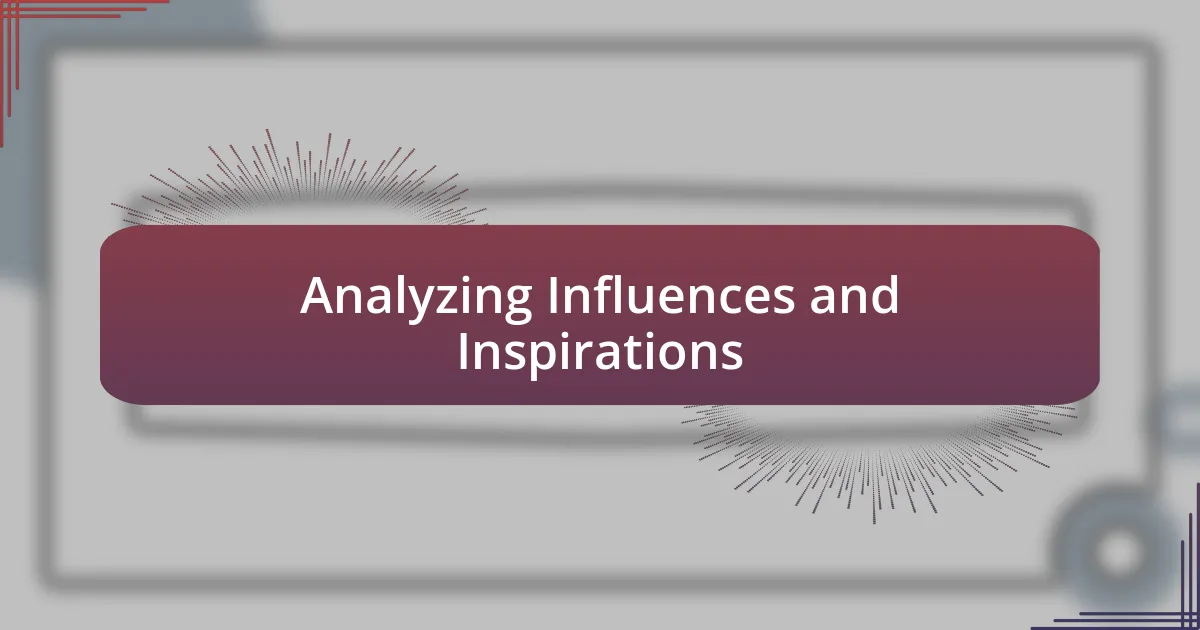
Analyzing Influences and Inspirations
Understanding the effects of various influences on my digital art style has been both enlightening and transformative for me. When I began my journey, I was particularly drawn to the work of surrealist artists. Their ability to evoke emotion through dream-like visuals resonated with me deeply. It made me wonder—how could I incorporate a sense of surrealism into my own pieces while maintaining a unique voice?
As I explored different styles, I noticed how certain color palettes, like those found in impressionist paintings, stirred my creativity. I recall the first time I experimented with a warm, vibrant palette; it completely changed the mood of my artwork. That experience raised a question in my mind: how much can colors influence the feelings portrayed in a piece? This realization drove me to study the emotional impact of color theory more rigorously, and it’s something I still apply to every artwork I create.
Additionally, I sought inspiration from everyday life, drawing from my environment and the people in it. For instance, a simple moment on a walk—watching shadows play on pavement—sparked a series of pieces that I still cherish today. It reminded me that inspiration isn’t always grand or monumental; sometimes, the subtle beauty in our surroundings can ignite our creativity in profound ways. How often do we overlook these simple moments yet they hold such potential?
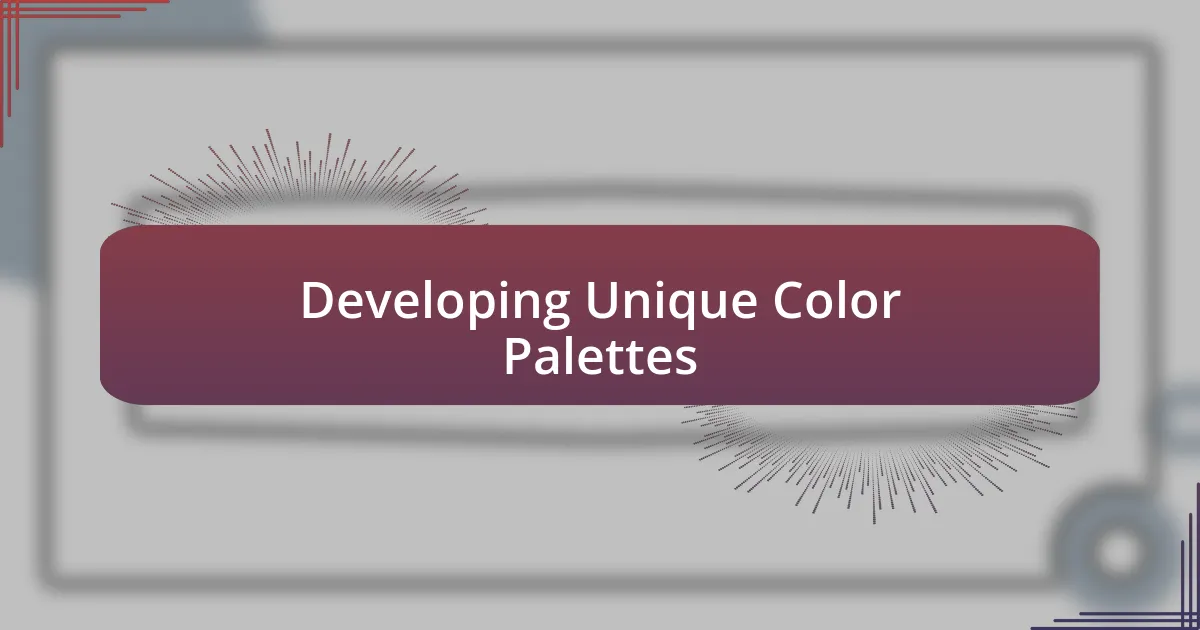
Developing Unique Color Palettes
Exploring unique color palettes has been one of the highlights of my artistic journey. I remember the moment I stumbled upon a palette inspired by a sunset. The deep oranges and soft pinks leaped off the canvas, compelling me to create a piece that felt alive. This accidental combination taught me that sometimes, the best color choices emerge from nature rather than a structured study. How often do we hesitate to step outside conventional palettes in favor of something bold and unexpected?
I’ve found that experimenting with color isn’t just about aesthetics; it’s about emotion. There was a time when I paired cold blues with bright yellows in a piece that depicted chaos, and it profoundly shifted how I understood emotional contrast in art. It hit me then—color choices can narrate stories just as powerfully as imagery. This realization pushed me to dive deeper into color theory, especially understanding complementary and analogous colors and how they can evoke different feelings.
Another fascinating approach I’ve adopted is creating color swatches that resonate with specific memories or experiences. For instance, I once crafted a palette inspired by an afternoon spent in my grandmother’s garden, filled with lush greens and vibrant florals. Each hue brought back a wave of nostalgia, enriching my creations with personal meaning. It raises a question: can our past experiences shape the colors we choose, ultimately weaving our narrative into our art? This interplay between color and memory has allowed me to develop a deeper connection to my pieces, making them truly unique.
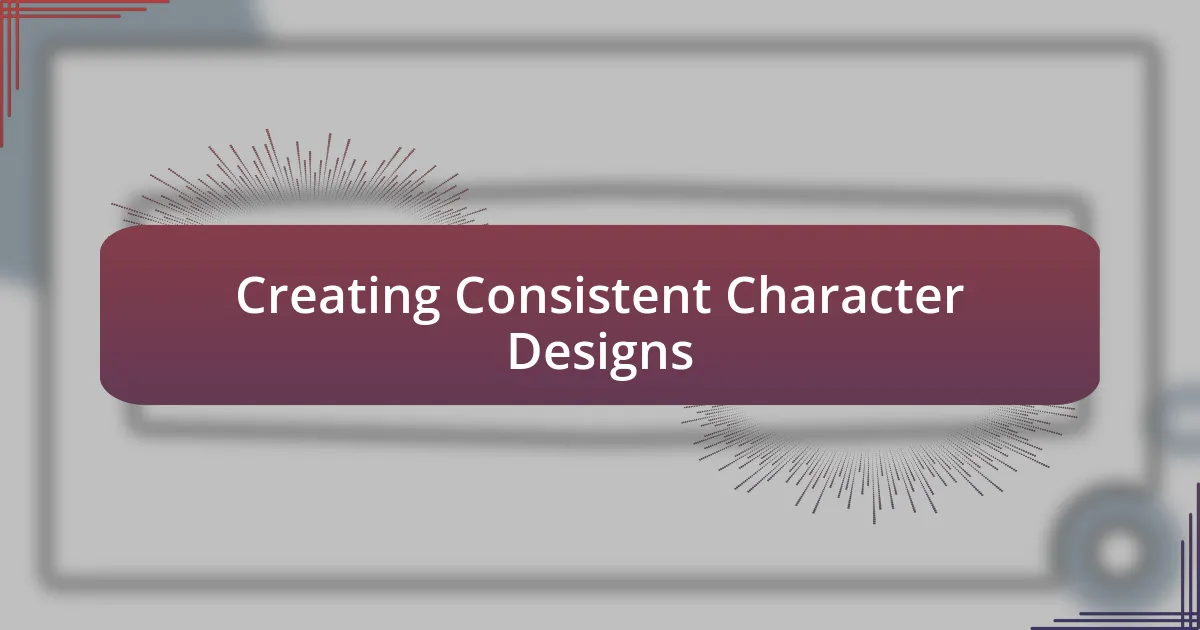
Creating Consistent Character Designs
Creating distinct character designs has always been a thrilling challenge for me. One thing I’ve learned is the importance of visual consistency; keeping shapes, features, and outfits uniform across different artworks can create a recognizable style. I recall the first character I developed with a specific set of traits—a pointed chin and large, expressive eyes. Once I established these features, it transformed not only how I drew the character but also how others perceived them.
I’ve also realized that backstory plays a crucial role in shaping character design. For example, I once created a character based on my love for vintage fashion. I immersed myself in the history of that era, allowing the character’s attire to reflect their backstory, which added depth and personality. It makes me wonder: how deeply intertwined can a character’s design and narrative be? Personalizing this connection made that character one of my favorites to illustrate, as every detail felt purposeful and meaningful.
In my experience, maintaining a character sheet has been invaluable. This resource helps me track everything from facial expressions to different outfits and poses, ensuring that my characters remain true to their design. I remember feeling overwhelmed at first, attempting to keep everything in my head. But once I began documenting these details, it became much easier to depict my characters consistently. Isn’t it fascinating how a simple organization tool can streamline creativity and enhance our artistic proficiency?

